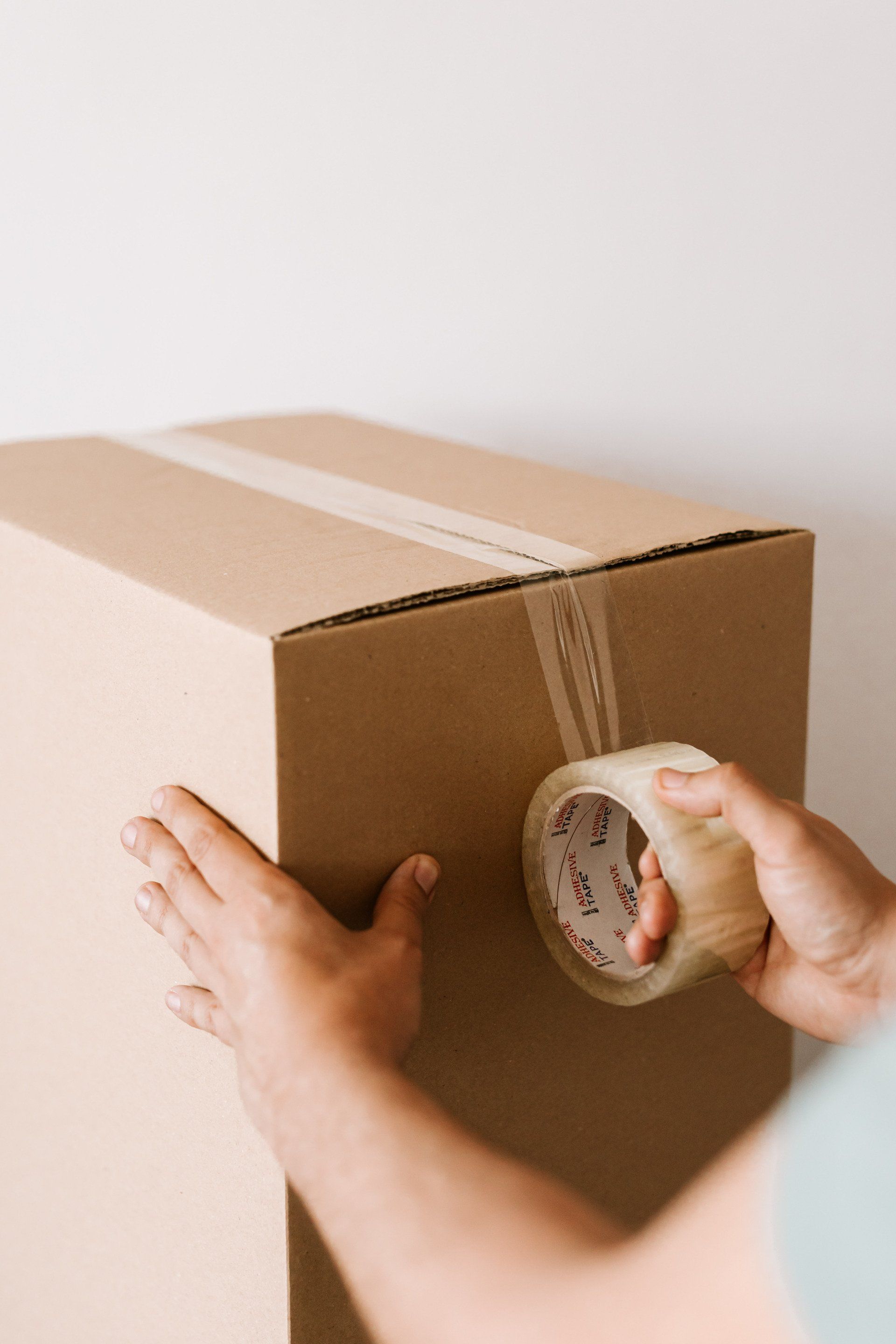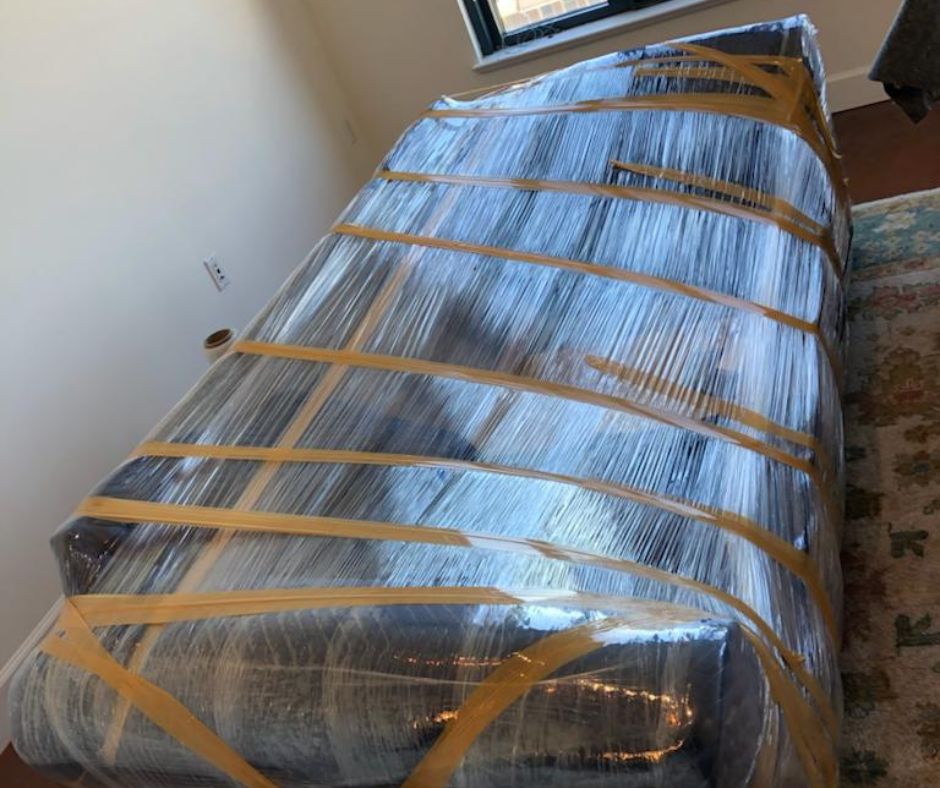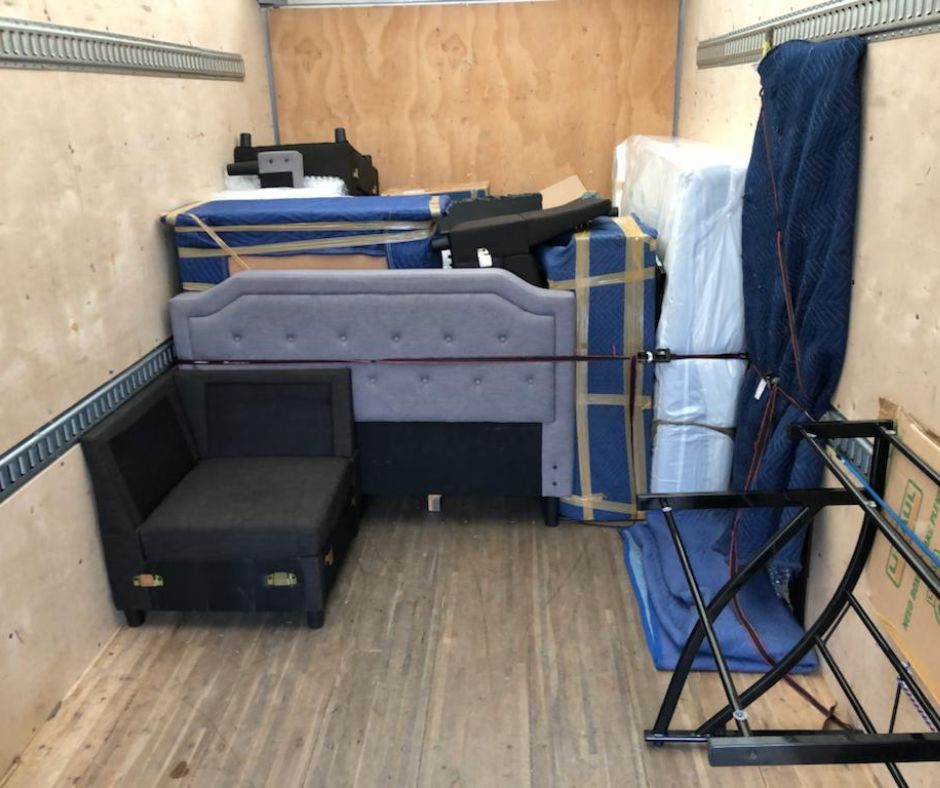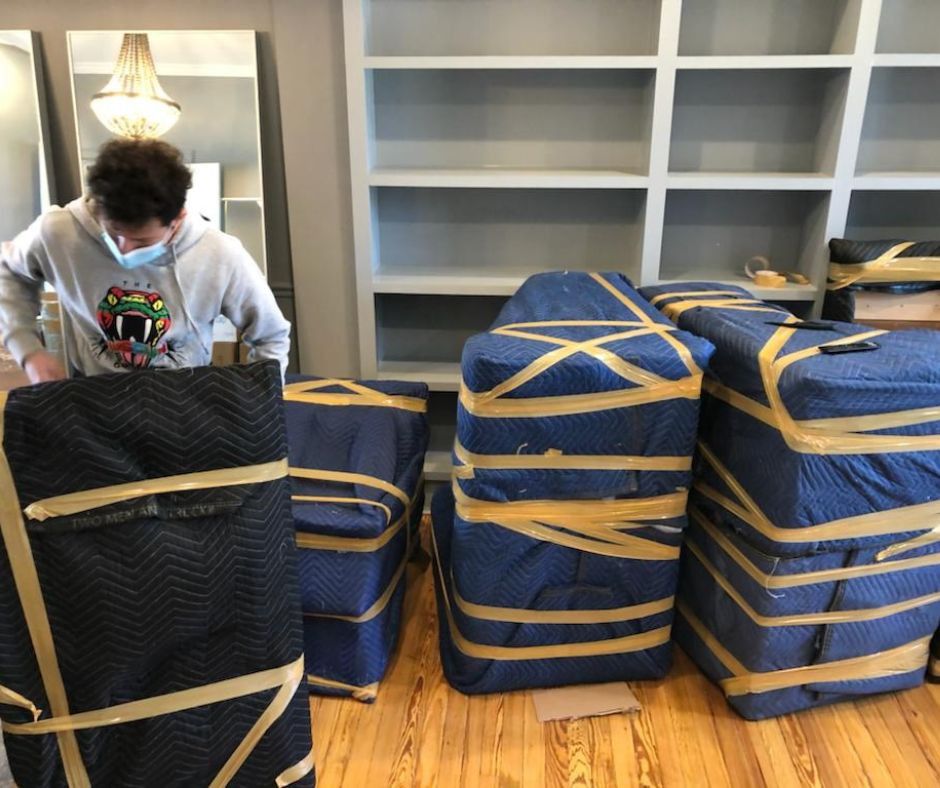
Request a Quote
We will get back to you as soon as possible.
Please try again later.
One of the essential elements of a successful move is packing your belongings efficiently and safely for long distance moves. Packing for a long-distance move requires careful planning and attention to detail. In this article, we’ll provide some essential tips to help you protect your items during the process.
The key to any successful packing job is organization. It would be best to create a plan before you start packing – figuring out what needs to go where, when, and how will make the job much easier in the long run. You’ll also need to ensure you have all the necessary supplies, including boxes, bubble wrap, tape, markers, and more. Taking the time to organize your items properly will help minimize stress and maximize safety during transit.
Finally, taking extra precautions when packing fragile or valuable items for a long-distance move is always wise. Paying close attention to how these objects are secured in boxes can save them from damage or loss throughout your journey. Following these simple guidelines for a stress-free long distance move , you can keep your belongings safe and sound until they arrive at their final destination!
Pre-Long distance Moves Planning
When it comes to long-distance moves, pre-move planning is vital. Planning and organizing your activity correctly will help ensure that you arrive at your destination with all your belongings safe and sound. In addition, a few packing tips can make the process much easier.
First, create an inventory list of all items you intend to bring with you on the move. This will help ensure nothing gets left behind and make it easier for movers to determine how much space is needed for the activity. Secondly, purchase high-quality packing supplies such as boxes, tape, bubble wrap, and labels to ensure your items are securely packed and easily identified when unpacking. Finally, pack items orderly so they are easy to unload upon arrival. Start by packing heavier items, like books or furniture pieces, then fill in with lighter things around them. Doing this will save time while loading and unloading your stuff.
By planning ahead of your long-distance move correctly, you can rest assured knowing your belongings will arrive safely at your new home.
Supplies Needed For Packing

Packing for a long-distance move can be a daunting task. The right supplies are essential to ensure your belongings remain safe and secure during the movement. Here are some packing tips for long-distance moving.
First, you’ll need plenty of boxes. Most movers recommend using smaller containers for heavier items like books and fragile items like dishes. You should also ensure all your packages are durable enough to withstand long periods of transport and handling. Depending on how much you’re packing, you may need many different sizes and types of boxes, so make sure you have enough before getting started.
Next, you’ll need packing materials to protect your items inside the boxes. Bubble wrap, packing paper, foam peanuts, and packing tape are all great options for keeping your belongings safe during transit. To save money on materials, consider recycling newspapers or old towels to wrap fragile items instead of buying new packing materials.
Lastly, it’s essential to label all packed boxes clearly with their contents and the room they should go in at the new location. This will help streamline unpacking when you arrive, so all your items can be put away quickly and easily!
What Items To Pack First
Once you have all the necessary packing supplies, it’s time to decide which items to pack first. It’s important to consider how much space and effort is involved in packing each item. Begin with things that require much space, such as bedding and furniture. These are usually the least fragile items, so that they can be placed at the bottom of your moving boxes. Next, focus on minor things that need more protection, like dishes and glassware. Wrap them in bubble wrap or paper pads before placing them in boxes. Lastly, use air cushioning or foam peanuts to pack any fragile electronics such as computers and televisions with extra care. Label the boxes containing these items prominently “Fragile” so they can be handled with extra attention during the move. Remember to use plenty of padding materials to protect your belongings from damage throughout transit when packing for a long-distance move.
How To Pack Fragile Objects

When packing fragile items, taking the necessary steps to protect them during a long-distance move is vital. The first step is to assess what items are fragile and need special attention. This includes glassware, dishes, electronics, and other delicate items. Once you have identified the fragile items, you must get the proper supplies for packing them safely. For example, bubble wrap or foam wraps are great for cushioning and protecting delicate objects from breakage. Make sure to buy ample supplies to adequately wrap each item separately in multiple layers for maximum protection.
Once all your supplies are gathered, wrap each item in bubble or foam wrap. Next, place small items into sealed plastic bags before wrapping them as an extra layer of protection. Next, use cardboard corner guards and protective blankets or bubble wrap around the edges and corners for more significant objects like furniture or mirrors. Lastly, remember to label any boxes containing fragile items so that movers know how to handle them accordingly during transit. These steps will ensure that your fragile belongings make it safely through your long-distance move!
Appropriate Containers And Boxes
Using suitable containers and boxes is essential when packing for a long-distance move. Not only will it make the moving process more manageable, but it’ll also keep your belongings safe and secure during transportation. Here are five essential items to consider when choosing packing materials:
-
- Cardboard Boxes
Cardboard boxes are an excellent option for packaging items due to their lightweight material and ease of storage. In addition, they come in various sizes and can be recycled once they’re no longer needed.
-
- Plastic Bins
Plastic bins are another great option for long-distance moves. Not only are they durable, but they also provide extra protection against water damage and dust particles. Plus, most plastic bins have lids that securely close, making them ideal for storing fragile items during transport MD.
-
- Bubble Wrap
Bubble wrap protects delicate items from breakage or scratch damage during transit. Be sure to purchase plenty of bubble wrap sheets so you have enough to cushion all your fragile belongings properly.
-
- Packing Peanuts
Packing peanuts provide additional cushioning between fragile objects in cardboard boxes or plastic bins to ensure there is little room for movement during transport. Consider biodegradable packing peanuts made from cornstarch instead of Styrofoam to prevent waste and mess.
-
- Tape
The tape is your best bet when securing your packages! Choose heavy-duty packing tape that won’t tear easily or dry out over time. For extra security, add several layers of tape around the lid and sides of each box or bin before closing it up tightly.
Now that you know the essentials of proper packing materials, you’re one step closer to having a successful move! With these supplies on hand, you can be sure that your belongings will remain safe until they arrive at their destination.
Labeling And Inventorying Items
Once you have the correct containers and boxes, it’s time to start labelling and inventorying items. This is an important step, as it will help you find what you need quickly.
Start by labelling each container with a detailed description of its contents. It’s best to include specific items in the report, such as “pillows,” “dishes,” or “clothing.” In addition, mark the box with a number corresponding to an itemized list of its contents. You can make a list on paper or save it on your computer or phone. Then, you can track it down quickly if something goes missing during the move. Taking these steps will ensure that your belongings remain safe throughout your move.
Loading The Vehicle For Transport

Loading the vehicle for transport is a crucial step in any long-distance move. Therefore, it’s essential to ensure that your belongings are loaded correctly and securely so they don’t get damaged or lost along the way. Here are some tips to help you pack your vehicle correctly:
Preparing the Vehicle
-
- Make sure the vehicle is cleaned out and ready to load.
-
- Check all car safety features , such as brakes, headlights, and tire pressure.
-
- Securely attach any moving straps or other equipment needed for loading.
Packing Your Belongings
-
- Pack boxes tightly to prevent shifting during transit.
-
- Use furniture pads or blankets to protect fragile items from damage.
-
- Load heavier objects first and place lighter items on top.
Securing Your Load
-
- Use rope or bungee cords to keep boxes from moving around in transit.
-
- Tie-down large furniture items with ratchet straps or moving blankets.
-
- Double-check that everything is secure before driving off.
Once you have finished packing your vehicle, double-check that everything is secured safely and that you haven’t left anything behind! Driving safely with a packed car will ensure that all your belongings arrive at their destination safely and in one piece.
Unpacking Tips
Now that the transport vehicle is loaded, it’s time to consider how best to unpack your belongings when you arrive at your new home. Unloading can be a challenging process, especially after a long-distance move. These are the following that you need to do.
First, take your time and start with the essentials first. It is vital to have essential items like clothes, bed linens, and toiletries available as soon as possible after you arrive at your new home. This will help make the transition much smoother and less stressful.
Next, when unpacking boxes, use caution and handle them carefully. Be sure to avoid dropping or throwing boxes around as this can cause damage to items inside that could not be easily repaired or replaced. Also, keep small pieces of furniture off the ground until appropriately assembled so they do not become damaged during transport or while being unloaded from the moving truck.
Finally, if you need any extra help with unpacking, don’t hesitate to ask for it. Friends and family members may lend a hand in getting all of your belongings out of their boxes and into their proper places in your new home. This can save valuable time and energy after such a long journey!
Dealing With Movers Or Relocation Services

When deciding how to move your belongings for a long-distance move, consider hiring movers or a relocation service. This can be a time-saving and convenient choice. However, research before signing a contract to ensure your belongings arrive safe and sound. The following are some tips when dealing with movers or relocation services.
Start with checking the company’s reputation by looking for customer reviews online. Next, ask for references from past customers who have used their services. Additionally, get an estimate of the cost to know what to expect and ensure it’s within your budget.
And ensure they are licensed and insured if your items get damaged during transit. To protect yourself further, take videos and pictures of your belongings before the movers arrive and keep them as proof that everything was intact before the move.
Then, confirm that all packing materials the movers use are new and secure. For example, seal boxes properly with tape so nothing will fall out during transport. Taking these precautions will help guarantee that your move goes smoothly.
Different Types Of Insurance Coverage
Transitioning from the previous section, it is vital to consider the different types of insurance coverage that you can purchase for long-distance moves. It is essential to know what kind of coverage is available and what it will cover when packing for a long-distance move.
Liability insurance is the first type of insurance that should be considered when planning a long-distance move. This type of insurance will protect you against any damages due to your belongings being damaged or lost during the move. It will also cover medical expenses if someone gets injured while handling your items during the move.
Another type of coverage to consider is cargo insurance. Cargo insurance covers any loss or damage to your belongings caused by an accident or natural disaster while they are in transit to their new home. This type of policy is especially beneficial if you are moving expensive items such as antiques, artwork, or electronics, as it will help ensure that you are reimbursed for any losses associated with these items.
Finally, there are other types of coverage available such as replacement value coverage, which pays out the total cost of replacing lost or damaged items; delayed delivery coverage, which reimburses you for costs associated with late deliveries; and transit protection plans, which provide additional benefits such as storage options and access to emergency assistance services. All these types of insurance policies will help protect your belongings throughout your move and ensure that you receive compensation for any damages or losses that may occur along the way.
Moving Checklist
Creating a moving checklist is essential when packing for long-distance moves. You’ll need to ensure you have all the necessary items and that they are securely packed. Start by gathering your necessities and essential documents such as your passport, driver’s license, birth certificate, social security card, etc. Then, pack these items separately safely so you don’t lose them during the move.
Once you’ve gathered and packed all your essential documents safely, it’s time to start filling the rest of your belongings. Start with more oversized items such as furniture, appliances, bookshelves, etc., then move on to smaller items like clothing, kitchenware, small electronics, etc. Make sure to label each box with its contents clearly so you know what goes where when it’s time to unpack at your new home.
Finally, arrange necessary transportation services for more oversized items such as furniture or appliances. Then, when everything is ready and packed up correctly, you can be confident knowing that your belongings will arrive in perfect condition.
Packing for a long-distance move is difficult, but careful planning and preparation can keep your belongings safe. It’s essential to have the right supplies and containers, know what to pack first and protect fragile items adequately. Additionally, it’s helpful to enlist the help of movers or relocation services if you’re able to do so. Remember to look into insurance coverage that’s best suited for your needs. Finally, having a thorough moving checklist can help ensure nothing gets left behind, and everything arrives safely at its destination. With all these tips in mind, you can feel confident that your move will go as smoothly as possible and your belongings will remain safe throughout the process. Good luck!
The post Packing For Long Distance Moves: Keep Your Belongings Safe appeared first on Treasure Moving.

